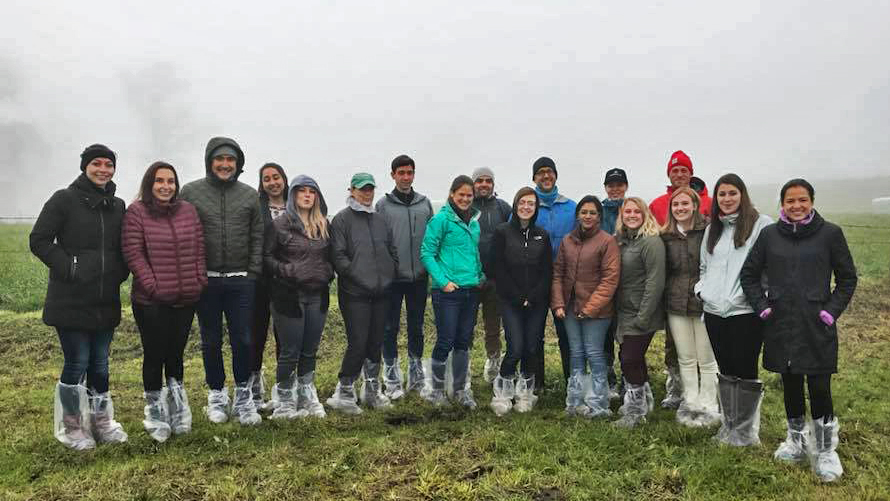
Program participants at a holistic beef farm, Manada Beef, in Puerto Montt, Chile
Farm to Table Chile was a great experience. The week was organized with a suite of activities and students that complemented each other well and allowed each participant to find their own area of education—whether looking for general exposure to a food system, specific applications within a discipline, or an extension of their cultural comfort zone. I found it to be a fascinating look into the factors that guide the decision-making of that cross-section of food producers and processors—including various roles of regulatory compliance, customer preferences, and individual/company values.
I can't choose one favorite site; I personally think the contrast between visits was the most enlightening element of the week. Marine Harvest gave us a great lens into the day-to-day operation of one region of an international company. That highlighted both differences and similarities with Cecinas Llanquihue (a family-owned company with generations of history and tradition in their community) and Carnes Manadas (a holistic beef operation driven by personal principles and searching out customers whose values are aligned). Colun and Nestle, both milk processors and purchasers, are superficially similar but working hard to differentiate themselves to both farmers and consumers. All are quality companies with much to be proud of and to learn from, and so the interesting nuance was the way that they each talked about their product and processes and how they prioritized certain values while making decisions necessary to stay viable.
Likewise, the breadth of participant backgrounds contributed to the richness of the learning. As a food animal veterinarian with a bent for systems and economics, I had my hands full with new information to take in at each site. During and after each visit, however, I was learning from everyone else's observations about food safety critical control points, employee occupational safety, equipment maintenance requirements, and microbiology—topics I haven't thought about in years. The bus rides gave ample opportunity to get to know the other group members and better understand not only what they had seen that I had missed, but also why they were on this trip and, more broadly, their own niche or role in food production and public health. The various ages, disciplines, and cultures represented made the course better, and it permanently extended my own understanding and network of the professional world in which I operate.
All that said, I will always associate this week in Chile with delicious food and outstanding hospitality. We continually joked that the course name should be extended to include Table to Stomach. Each host company was generous to invite us in, answer our questions, and provide an abundance of delicious proof that they produce food to be proud of and enjoyed. We happily obliged.
- Julie Adamchick
PhD student, College of Veterinary Medicine, University of Minnesota